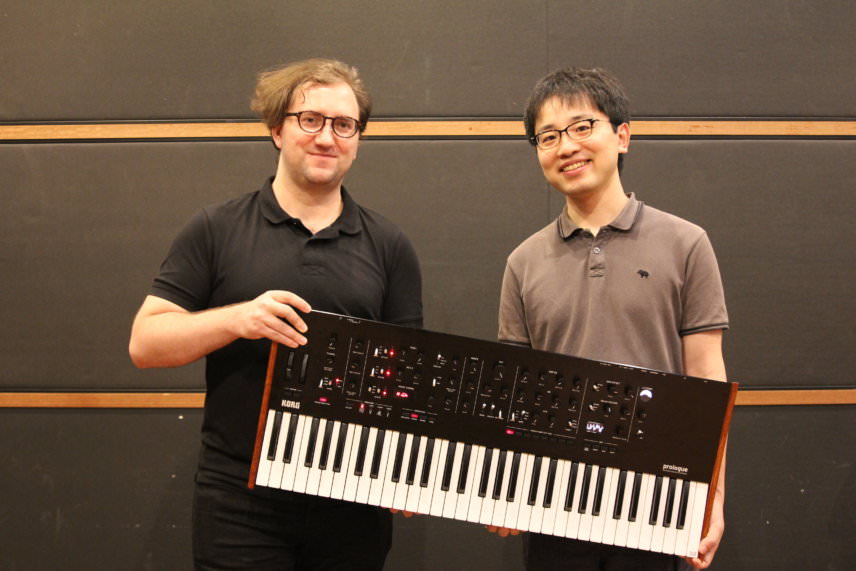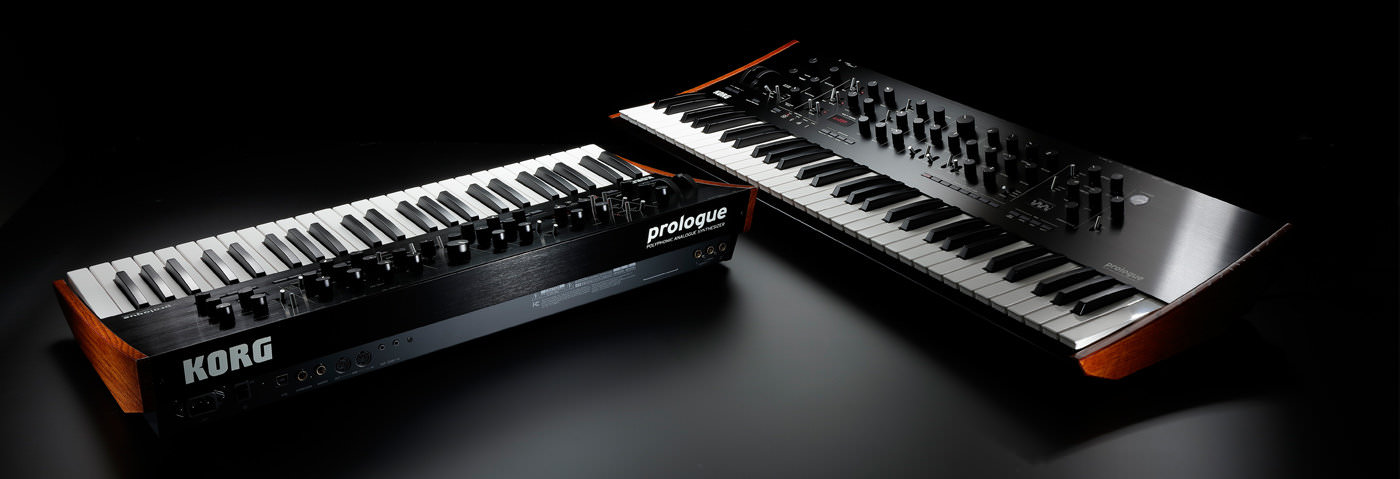Korg Prologue designers Etienne Noreau-Hebert and Yoshihito Yamada discuss the company’s new flagship synth and the pressure of following up on previous successes.
The new Korg Prologue
, unveiled at this year’s NAMM show, is a big step for the Japanese company. For a start, it’s a new flagship synth for the company’s analogue division, sitting above the Minilogue. Secondly, it’s the first major release since the departure of Tatsuya Takahashi
, the designer behind some of the biggest releases in Korg’s recent history.
We sat down with designers Etienne Noreau-Hebert and Yoshihito Yamada to discuss some of the finer details of the synth and whether they felt any pressure to follow in the footsteps of the much-celebrated Tats.

Korg Prologue designers Etienne Noreau-Hebert (left) and Yoshihito Yamada
Attack: At first glance I think people could be forgiven for assuming that the Prologue is very similar to the Minilogue. Once you start to play with it that’s obviously not the case. Can you go into some detail about just how much of the synth is based on new circuits and new technology?
Yamada: Although the oscillators are based on the Minilogue, we brushed up the implementation and were able to achieve a better sound. We made many analogue synths these past few years, and this experience allowed us to better tune the circuits. The VCF of the Prologue, however, is completely new. This new VCF is wider and brighter than the Minilogue’s.
The VCF of the Prologue is completely new. This new VCF is wider and brighter than the Minilogue’s.
It seems like some people are having a bit of difficulty understanding the focus of the Prologue. Would you say it’s best to view it as a hybrid synth or as an analogue synth with additional digital features on top?
Yamada: Yes, the combination of the rich analogue sound and digital harmonics is the essence of the Prologue. And in the continuation of the -logue series, we maintained a direct and intuitive user interface.
Is it possible to program patches with entirely analogue signal path, or is there always an element of AD and DA conversion involved along the way?
Noreau-Hebert: The final output comes from a DA conversion for the digital effects. But we made all efforts to get a completely clear bypass sound. It doesn’t degrade any aspects of this synth.
A lot has been made about the fact that this is probably the biggest analogue-focussed release from Korg since the departure of Tatsuya Takahashi. In practice, how much did that affect the design process?
Yamada: Originally, Prologue was in the early stages of planning while Tats was still with Korg, and he is still doing consulting for us. We are all friends and so it is easy for us to keep a good relationship with him. I have been the lead engineer for this project as I was for the Monologue but we still have the same team that made the Volcas and other -logue synths and even welcomed new members as we expand our product directions. For future products you can expect new perspectives but also continued input from Tats.
Did you feel pressure to live up to people’s expectations after the Minilogue and Monologue?
Yamada: The only pressure we ever feel is to produce the best possible products. We designed each synth of the -logue series from different perspectives, and although there is overlap, we believe the Prologue customer is slightly different to that of our other products.
The price point the Prologue sits in is highly competitive. I won’t ask you to compare directly with other products in that market, but what do you think makes the Prologue stand out?
Yamada: Prologue offers a classic, yet distinctive, analogue sound with many modern touches as well as the ability to bring in the extremely flexible third oscillator. It’s a unique instrument with character, tradition and originality, that’s what’s most important about it.
Our future product schedule is so crowded right now – and going in new directions!
How do you see the SDK enhancing the user experience in the long term? I think it’s probably quite difficult for the average user to understand what that might bring to the keyboard. Can you suggest what you expect to see happen?
Noreau-Hebert: We are currently opening up the SDK with a focus mainly around third party and independent developers. New content usable by the average Prologue owner will not appear overnight. However, in the long term, it means the Prologue will benefit from refreshing sounds and effects. Also, due to the minimal amount of software dependencies, the SDK will be serviceable well beyond the typical product lifecycle.
Do you think we’ll see any Prologue technology trickle down to other Korg products in future?
Yamada: It’s possible, but first we need to see what the Prologue customers most respond to.
The Prologue is clearly the new analogue flagship for Korg. I’m sure you won’t give much away, but do you think there could be room above it for an even more high-end option?
Yamada: It is far too early to even consider this, although of course that also means we leave our options open. Besides, our future product schedule is so crowded right now – and going in new directions!

04.05 PM
should have asked what the reason was of them to leave out After touch 😛
10.05 AM
I really like my Prologue 16! I was a bit bummed that custom scales (Monologue) and the sequencer/motion recording function (Minilogue) didn’t make it in. Still holding out hope they will arrive in an update. The synth feels simple and immediate to use, with a nice unique sound palate thanks to the addition of the digital osc. Effects are high-quality and build quality is good. Nicely done having a 16-voice synth at this price point!